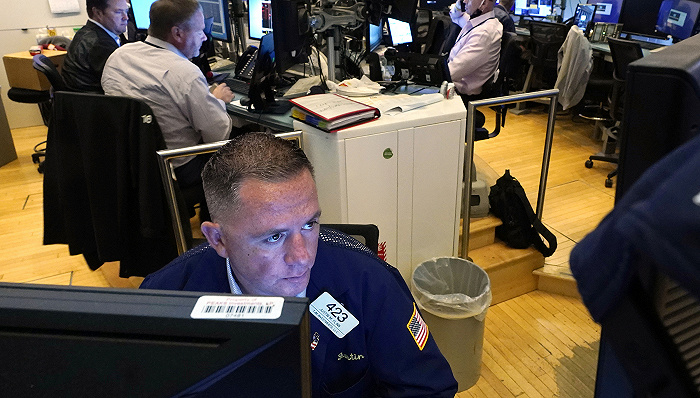
Whether the S&P 500 will rise above 6000 or plummet by 60% in the next year, with increasing divisions on Wall Street
The resilience of the US economy, expectations of interest rate cuts from the Federal Reserve, and optimism about the future of artificial intelligence trade have led several investors, including UBS, Bank of America, Barclays, Goldman Sachs, etc., to raise their target for this year’s S&P 500 index to 5400 points. Many analysts also speculate that the S&P 500 will break through 6000 points next year, provided that large technology companies continue to exceed expectations in losses.
Stopping Thursday’s US stock market opening, the S&P 500 closed at 5150.48 points, down 0.29%, and has risen 8% so far this year.
Compared to the Dow Jones Industrial Average, the S&P 500 unveils the 500 listed companies in the United States, which is more dangerous and has better continuity, and can reflect a wider range of mall changes.

Ed Yardeni, President of Yardeni Research, has been bullish on the S&P 500 index since the end of last year, including expectations of Fed rate normalization, improved corporate productivity, and strong consumer purchasing power. Yardeni believes that the high-tech backlash lured by large technology companies is allocating more resources towards hardware and software to cope with long-term labor shortages. Compared to overseas shopping malls, the United States has a stronger advantage in the field of artificial intelligence, making it stand out in attracting foreign investment.
During an interview with CNBC on Wednesday, Yardeni expressed a “long bull” opinion, stating that if viewed conservatively, the S&P 500 index is expected to rise to 5400 points this year and further drop to 6500 points in 2026. This bull market will continue until the next economic downturn hits. He also estimates that the US economy will not experience a downturn in the next two years.
John Higgins, the chief shopping economist at Capital Micro, has a more optimistic guess, estimating that the S&P 500 index may climb to 6500 points by the end of 2025. However, he also warned that the S&P 500 index is creating a foam at present, which is similar to the foam created in late 1990 in many aspects, especially in the form of trying to obtain the benefits of revolutionary techniques.
Senior analysts compared the continuous decline of US stocks with the two rounds of technology foam in the previous century. From the perspective of Jamie Dimon, CEO of JPMorgan Chase, AI shows no broader vision at present, which is not comparable to the Internet foam at the end of 1990. The seven major technology companies in the US stock market – Apple, Amazon, Google, META, Microsoft, Nvidia, and Tesla – are almost all deeply involved in the field of artificial intelligence. Apple is even more dedicated to the category of abandoned electric vehicles and inherits them.
Guolian Securities pointed out in its complaint that the US stock market is currently at a high level, but there may still be gaps compared with foam. From the perspective of valuation, compared with other foam times, the valuation of the seven technology companies mentioned above still has room for growth compared with the peak. From the basic point of view, the basic point of this round of romance is significantly better than that of the Internet foam era in 2000. Looking ahead to the future, the mall reaction after the release of the joint Nvidia financial report suggests that the stock price of the company, which has exceeded expectations, may still have room for improvement.
However, not everyone is optimistic about the S&P 500 index. Senior technical analyst Milton Berg recently warned on a podcast that the prediction of a 60% surge in the S&P 500 by market bears could soon be proven correct due to the risk of some data sliding towards a slump. Berg was a staff officer for George Soros, Stanley Drenmiller, and others.
Huahuo Securities stated in its complaint that on March 12th, the P/L ratio of the S&P 500 index was 25.7 times, which is at the 86% percentile level since 1990; The price to book ratio is 4.66 times, which is at the 95% percentile level since 1990. Currently, the valuation level of US stocks is clearly at an all-time high. Recently, the continuous decline of Mongolian and American stocks and the Federal Reserve’s interest rate hikes have combined to cause the equity risk premium of the S&P 500 index to fall into a negative range again after more than 20 years, which often requires experiencing a larger bear market to return to a positive value. Looking ahead to the future, Huahuo Securities believes that the United States is experiencing a continuous inversion of non end interest rates, while commenting that shopping malls are still concerned about the prospect of economic growth in the United States.
Both Anyi Securities and Huaxia Securities have pointed out that the risks of the US stock market not going away lie in the uncertainty of the Federal Reserve’s interest rate cut pace, unexpected microeconomic fundamentals, and unexpected geopolitical risks in China. The mall expects the Federal Reserve to remain silent when it convenes a rally on March 19-20.